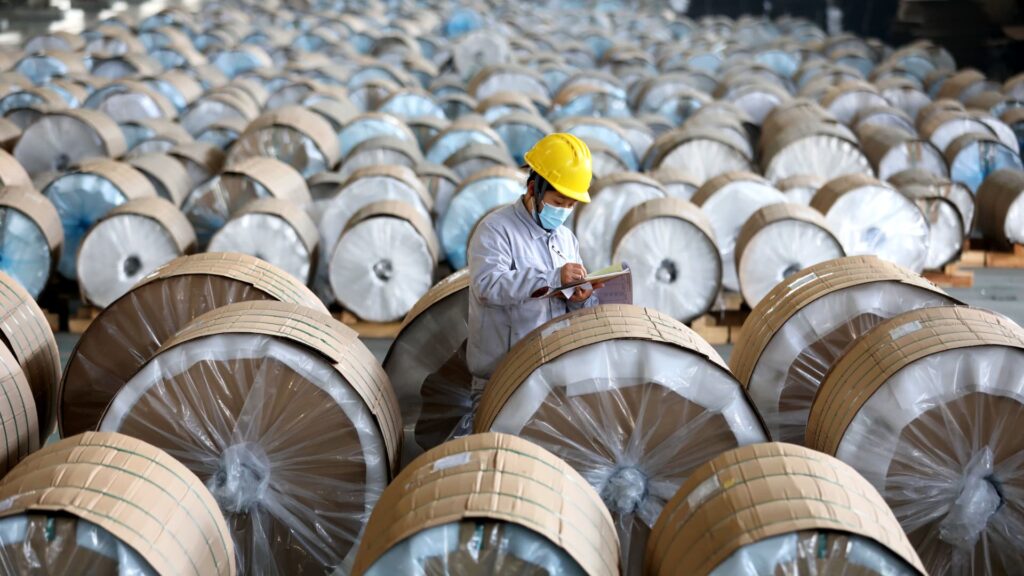SUIXI, CHINA – DECEMBER 30: An employee works on the production line of aluminum foil at a workshop of Anhui Limu New Material Technology Co., Ltd on December 30, 2023 in Suixi County, Huaibei City, Anhui Province of China. (Photo by Li Xin/VCG via Getty Images)
Vcg | Visual China Group | Getty Images
Global commodity markets are in a “super squeeze” amid supply disruptions and lack of investment — and it’s only going to get worse as geopolitical and climate risks exacerbate the situation, HSBC said.
“For some time now we have described global commodity markets as being in a ‘super-squeeze,'” its chief economist Paul Bloxham told CNBC.
A commodity “super squeeze” is denoted by higher prices driven by supply constraints more than a robust growth in demand, he explained.
“If it’s a supply constraint that’s driving high commodity prices, it’s a very different story for global growth,” he told CNBC via Zoom. Higher prices as a result of a super squeeze are “not as positive.”
“We see the deeper ‘super-squeeze’ factors on the supply-side as still set to play a key role in keeping commodity prices elevated,” he said, outlining factors like political uncertainties, climate change and the lack of investments into the green energy transition.
The super squeeze could be deeper, or more prolonged if geopolitical, climate change or energy transition related supply disruptions are larger than expected.
Paul Bloxham
HSBC chief economist
Geopolitical risks include the ongoing Israel-Hamas conflict in Gaza and the Ukraine war, which have hampered global trade, as seen in shipping disruptions from the recent Houthi attacks in the Red Sea.
Another reason is climate change, which disrupts supply chains as well as commodities supply, especially in the agricultural space.
“The super squeeze could be deeper, or more prolonged if geopolitical, climate change or energy transition related supply disruptions are larger than expected,” he added.
Lack of investments
The world’s pursuit of a net-zero…
Read the full article here





